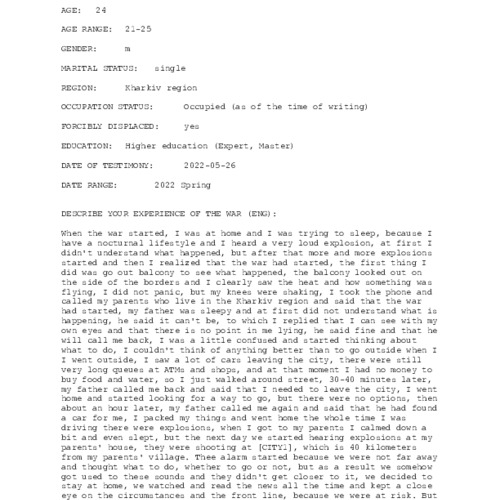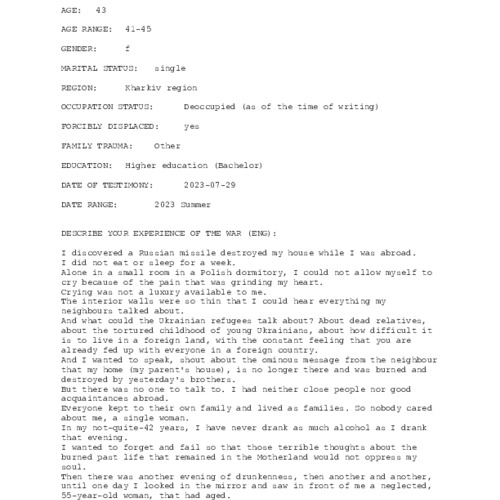Liberation of Kharkiv
What does it mean to be liberated? After your home destroyed, your neighbours gone, and your life upturned by war? For those living in Kharkiv, this is a deeply personal question, and one many have asked themselves.
The Kharkiv region, on Ukraine’s northeastern border with Russia, was among the first and hardest hit during the full-scale Russian invasion of 2022. As Ukraine’s second-largest city and a cultural and linguistic borderland, Kharkiv was a strategic and symbolic target. As the Kharkiv counteroffensive of 2022 saw Ukrainian forces reclaim large parts of the region, the liberation could not undo all the pain of occupation.
In the face of a changing battlefield, this exhibit will focus on how individuals change and recalibrate their identities, relationships, and actions instead of a simple arc of victimhood or triumph. Split into three periods, two testimonies describe the chaos and uncertainty of the early invasion during pre-occupation, one comes from during the Russian occupation, and one comes after the liberation of Kharkiv. Together, following these individuals, we can follow the changing feelings, to discover the meaning of liberation.
Descriptions of daily life are vivid in these accounts, and the change when Russian occupiers appeared is present where a constant state of fear and forced displacement are present. Many testimonies end with quotes cheering on Ukraine and vowing to never forgive the Russians showing how memories have hardened under occupation. But as time progresses, we see that liberation does not mean a complete return to normalcy, but an extension of uncertainties that have already been in place.
Collectively, the testimonies tie into themes of memory, displacement, testimony, and language. The memory can be selective, and interpreted differently, where displacement can be more emotional than physical, and testimony is used as both a form of expression and evidence of events. By looking at a variety of sources, from different times and different people, these sources can be leveraged from fragments to form a cohesive timeline.
Arranged chronologically, four testimonies are presented: two from the period pre-occupation (38, 51), one from during the occupation (1362), and one after liberation (1606). The testimonies offer insight into the lives of those who lived through war, from the outbreak to liberation. By focusing on a single region, this exhibit traces the shift between grief and resilience, revealing them that liberation is not the end, but a lived and continuous experience.



